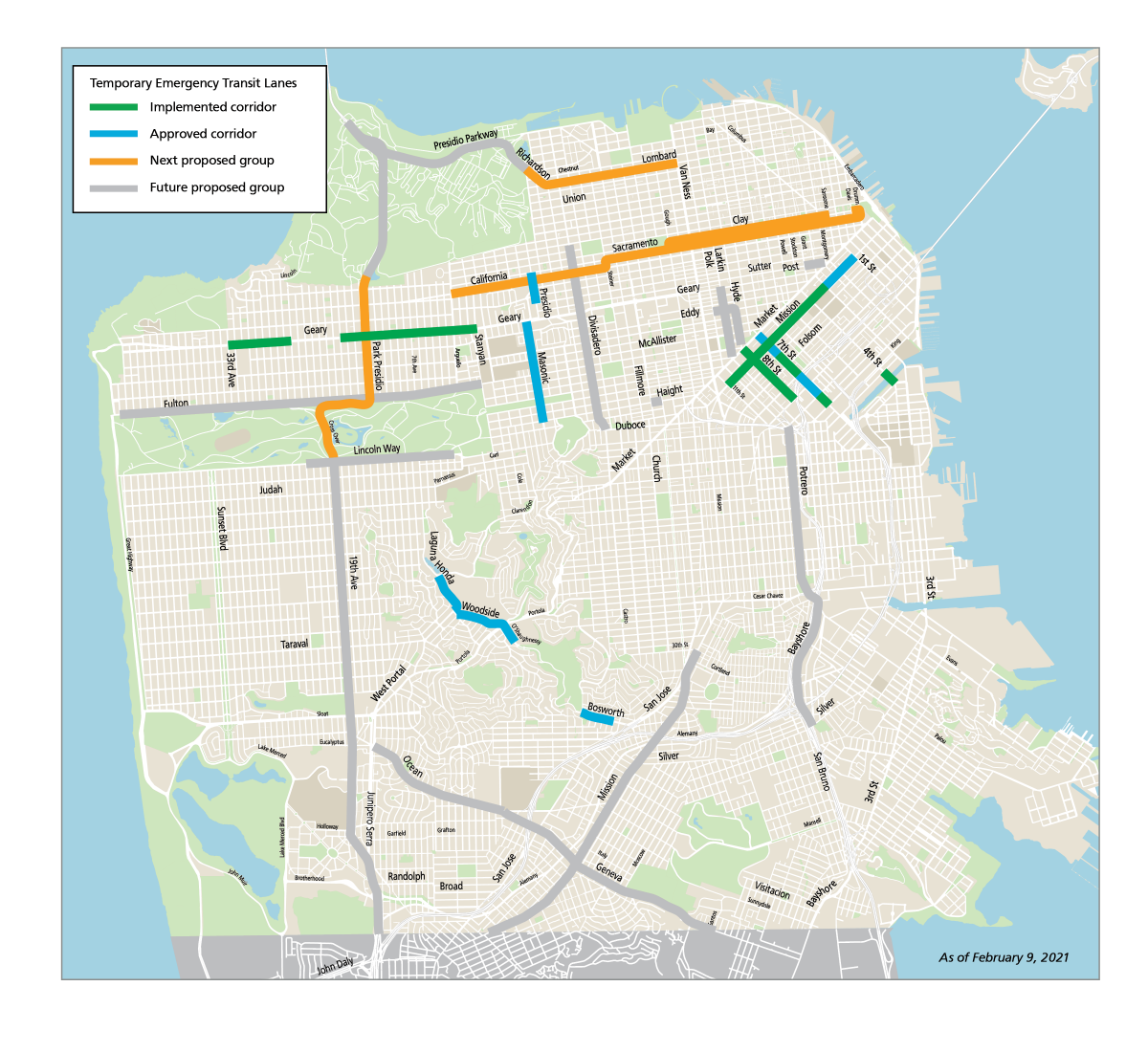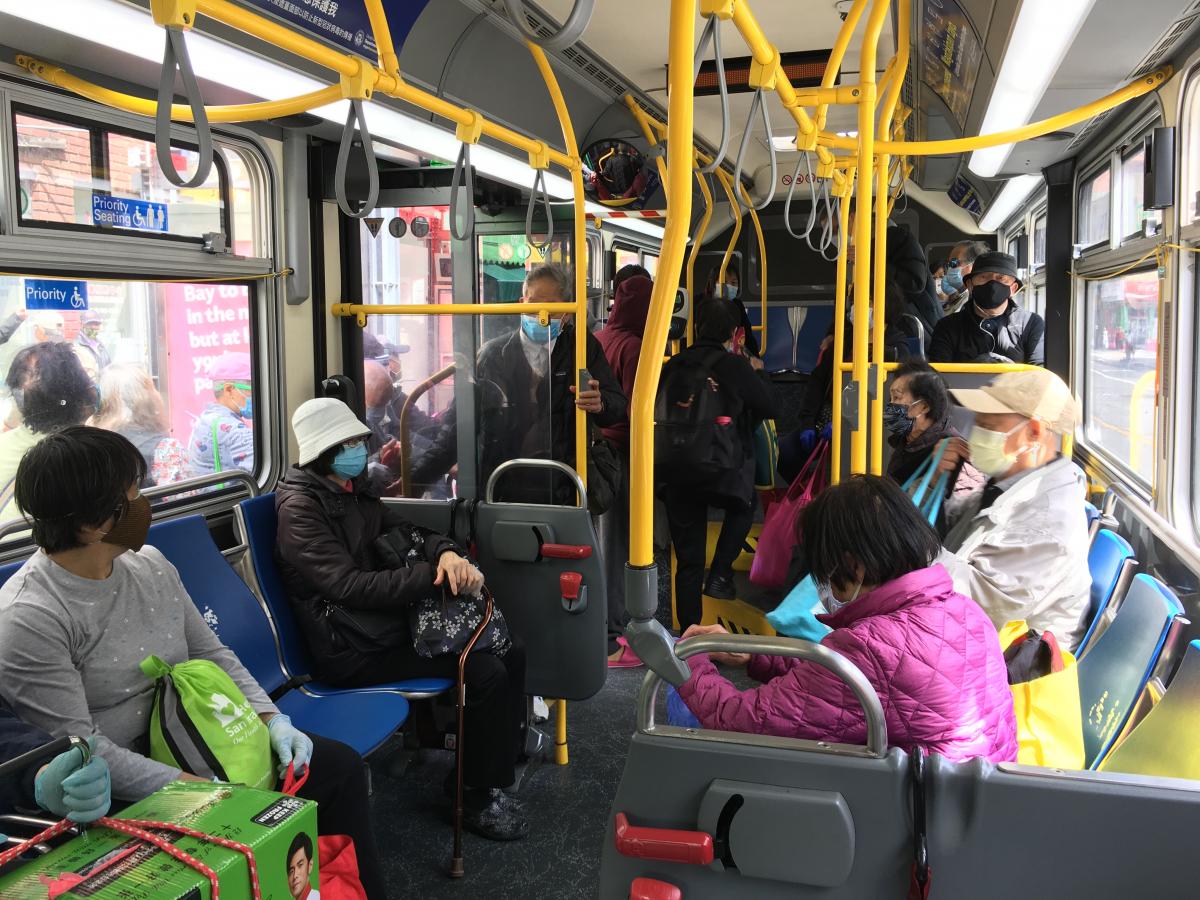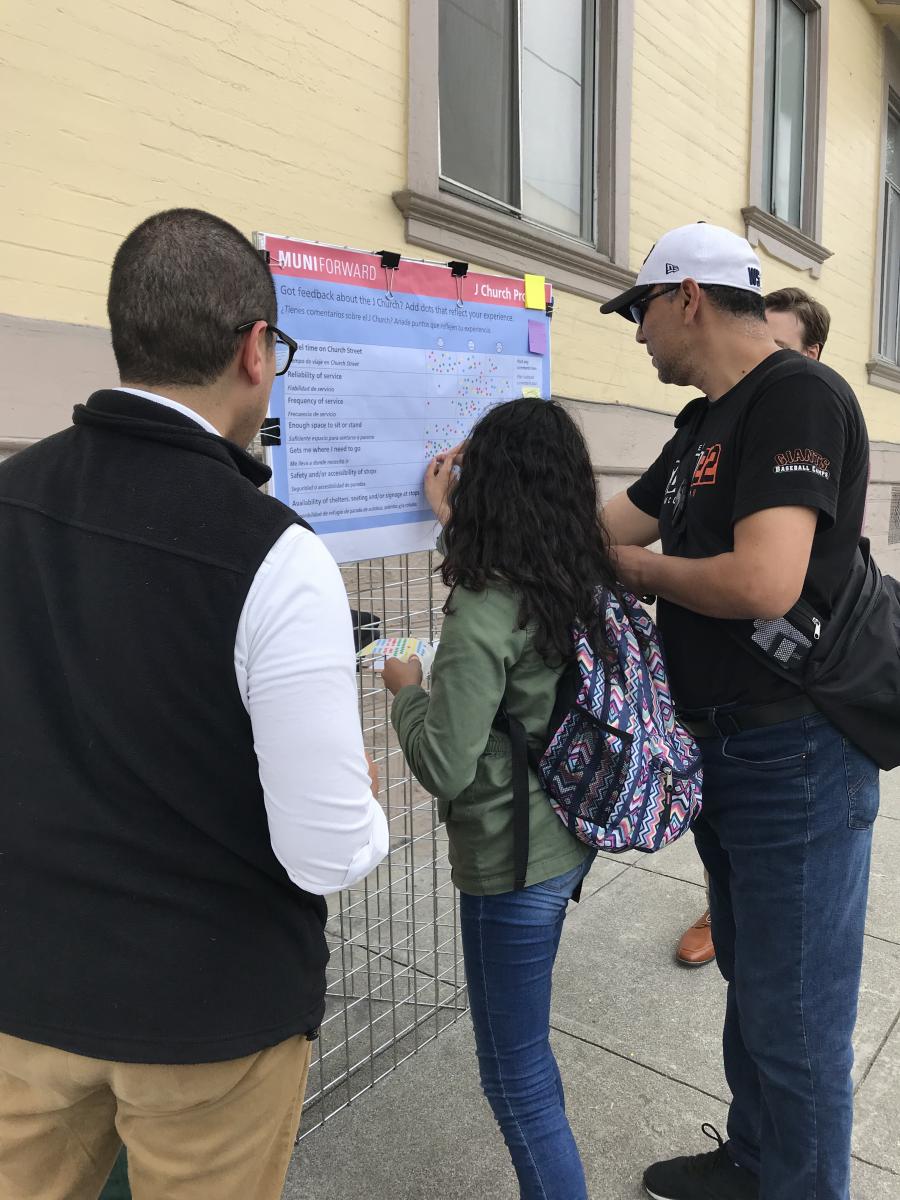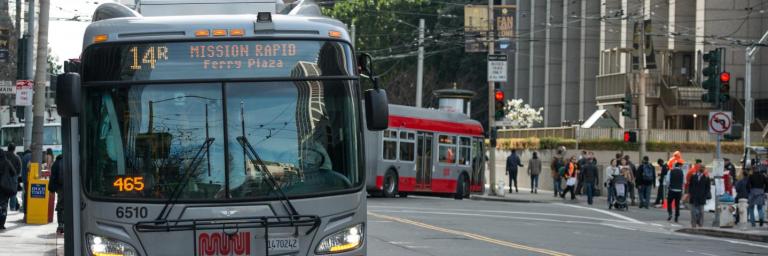Check out the evaluation summary of the TETL program that shows how the program benefitted riders by implementing transit improvements at a low cost and unprecedented pace!
As traffic congestion returns, the SFMTA is working to protect San Franciscans who continue to rely on Muni to get to work and essential appointments during this pandemic. In order to protect people who rely on transit from increased exposure to COVID-19 on slow or crowded buses, we need to act quickly to move more people with fewer resources. Installing temporary emergency transit lanes will keep buses out of traffic so that essential workers and transit dependent San Franciscans do not bear the costs of traffic congestion.
Because transit lanes improve service along an entire route, once implemented the currently approved temporary transit lanes will benefit 38% of existing riders. If approved, the full program would benefit 84% of existing riders.
- Planning
- Implementation / Construction
Temporary Emergency Transit Lanes Projects
Approved temporary emergency transit lanes include the following projects:
- 24 Divisadero: Divisadero Street from Clay to Waller streets (Replaced with the 24 Divisadero Safety and Transit Project)
- 28 19th Avenue: Park Presidio Lombard Temp. HOV Lanes
Transit lanes projects that have been approved as permanent after an evaluation and additional outreach:
- 1 California: Locations on California, Sacramento Streets
- 14 Mission and 14R Mission Rapid: Mission Street in SoMa
- 19 Polk: 7th and 8th Streets in SoMa
- 38 Geary and 38R Geary Rapid: Geary Boulevard in the Richmond
- 43 Masonic and 44 O’Shaughnessy: Locations on Presidio, Masonic, Laguna Honda, Woodside, and Bosworth streets
- T Third: 4th Street Bridge from Berry to Channel streets
Once implemented, each approved project will undergo technical evaluation and a further public outreach process to determine if it should be made permanent. *Check each project page for current status.
By design, the temporary emergency transit lanes will be striped only with white paint and identified with “Bus/Taxi Only” stenciling making them easily reversible. As a temporary measure, these lanes would be automatically removed within 120 days after the emergency order is lifted, unless there is a public process to make a lane permanent.
The SFMTA Board approved initial temporary emergency transit lanes on June 30, 2020. They directed that additional temporary transit lanes on specified corridors can be approved by the City Traffic Engineer’s Office following a public hearing process.
Note: The San Francisco Board of Supervisors unanimously rejected an appeal of the Temporary Emergency Transit Lanes (TETL) project’s compliance with the California Environmental Quality Act on September 29, 2020. As a result, Temporary Emergency Transit Lanes proposed as part of that project may resume approval and implementation actions.
Map of Approved and Proposed Temporary Transit Lanes

Because transit lanes improve service along an entire route, currently approved temporary transit lanes will benefit 38% of existing riders. If approved, the full program would benefit 84% of existing riders. Access larger maps of approved temporary transit lanes that can be downloaded.
Focus on Equity
Based on ridership and travel time data, these transit lanes will benefit customers on Muni routes critical to neighborhoods with high percentages of people of color and low-income households. These neighborhoods include Ingleside, Outer Mission, Excelsior, Visitacion Valley, Bayview, Mission, SoMa and the Tenderloin. Since improvements support more frequent service on the entire line, all passengers will benefit, even if the transit lane isn’t in their neighborhood.
Transportation is Required for Economic Recovery
Without transportation, there is no recovery. Our economy cannot function without employees being able to get to work and customers being able to access shops, restaurants and services. If just a fraction of the people riding transit before the crisis begin driving alone, traffic congestion will be so bad that it could paralyze San Francisco’s economic recovery. From our bus operators to grocery store and healthcare providers, we are committed to getting essential workers to their destinations safely. These are the people most at risk when traffic congestion comes roaring back and gridlock threatens our streets. Muni must be an effective option that moves people who are dependent on transit while reducing traffic congestion for those who need to drive, helping our economy to get back on its feet.
Protecting Muni Customers with Transit Lanes
 Creating temporary emergency transit lanes helps protect public health by reducing crowding and improving Muni customer travel times as buses are kept out of traffic. Transit lanes allow buses to complete routes in less time and return back into service more quickly. This enables us to provide more service with the same number of buses. That means with our limited resources, Muni can pick up customers more frequently to reduce crowding and provide more space onboard. Customers also reduce their possible exposure to COVID-19 when their travel time is shortened.
Creating temporary emergency transit lanes helps protect public health by reducing crowding and improving Muni customer travel times as buses are kept out of traffic. Transit lanes allow buses to complete routes in less time and return back into service more quickly. This enables us to provide more service with the same number of buses. That means with our limited resources, Muni can pick up customers more frequently to reduce crowding and provide more space onboard. Customers also reduce their possible exposure to COVID-19 when their travel time is shortened.
Although traffic congestion has been lighter than usual since shelter-in-place went into effect, that won’t last. During the initial months of shelter-in-place, Muni lines saw a 15% reduction in travel time on average, with some lines experiencing much higher time savings. We are investing this time savings into more frequent service with the same number of buses, which reduces crowding. But if we don’t do anything as congestion returns, buses will lose that time savings due to traffic delays, impacting the frequency of service Muni can provide. Meanwhile, on streets that already have transit lanes, there has been no or very little Muni time savings with the decreased traffic – demonstrating just how effective those lanes have been at keeping buses moving. First responders will also be able to use this network of lanes to respond to health emergencies faster.
On-the-Ground Evaluation and Real-Time Engagement

To prevent congestion from putting our customers at greater risk and paralyzing our economy, we cannot delay. It is critical that we install temporary emergency transit lanes before traffic congestion returns in force. The urgent nature of this emergency calls for putting temporary measures into place, directly on the street. This approach allows the city to respond quickly to protect public health and support economic recovery while we work with the community to evaluate and adjust the temporary transit lanes in real time. Areas of evaluation will include:
- Health and safety benefits
- Economic health
- Equity
- Neighborhood impacts
- Transit performance
- Traffic safety
- Impacts to other road users
We will work with community-based organizations to ensure traditionally marginalized communities are prioritized in the decision-making. Community-based organizations, stakeholders and neighbors will be involved in shaping the framework and process for evaluating and adjusting the emergency transit lanes in real time. Based on public feedback and ongoing, on-the-ground data monitoring of the temporary transit lanes, we can tweak – or even remove lanes – to meet the needs of the community and Muni customers.
